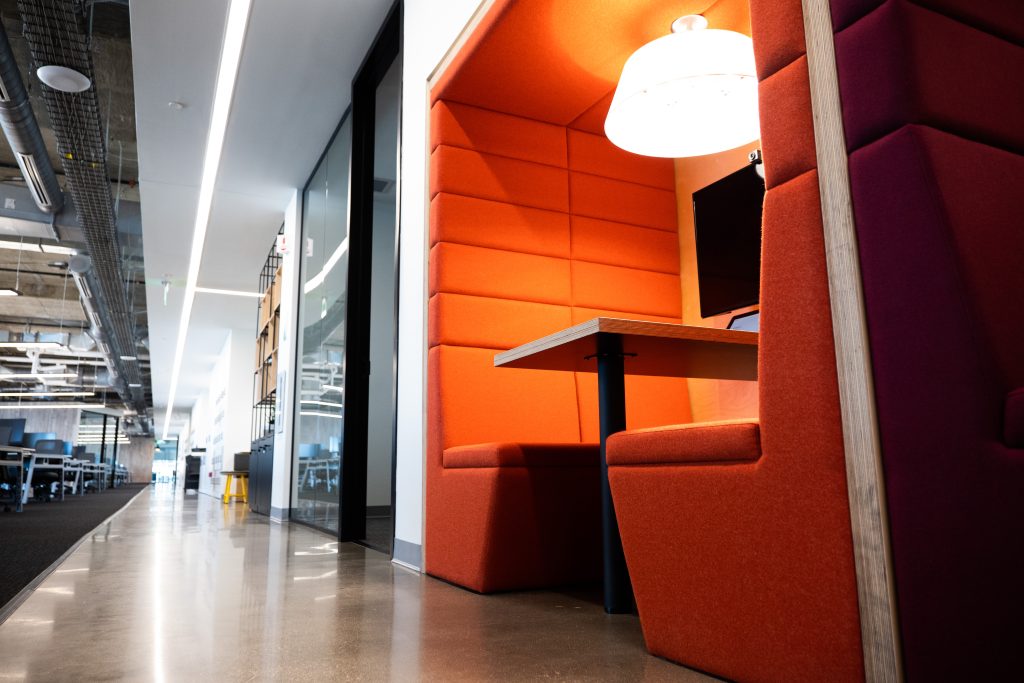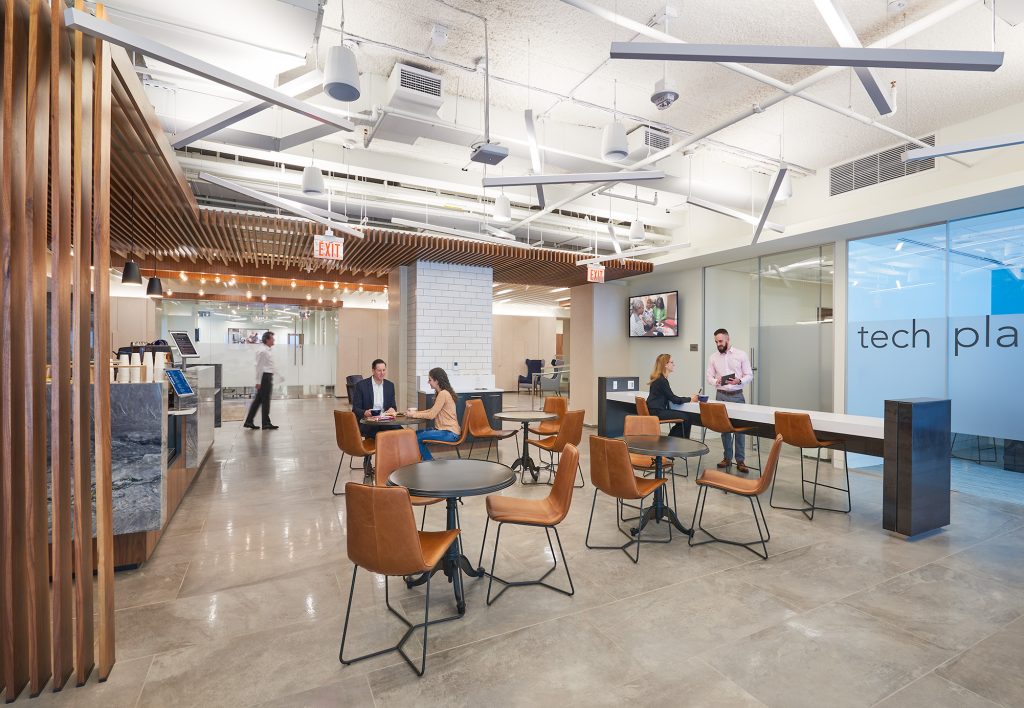Recently on the KGO blog, we’ve talked about how future work models are driving major changes in the corporate office space. As remote and hybrid work grows, the very purpose of the office is shifting from a space to complete individual tasks to a space for collaboration.
We talked to Louise Humphreys, Principal Owner of Spatially Speaking and KGO partner, to learn why interior design and furniture are important in creating an office space that supports the work that needs to be done. Read our interview with Louise below.
Why is furniture management so important?
Furnishing an office can be a surprisingly complicated, emotional and time-consuming effort. I manage the process of specifying, procuring and installing furniture for businesses. In addition, furniture is expensive and must be an integral part of your project budget. New furniture can range from $20 to $50/SF, which can be a considerable cost element in your overall space fit-up budget.
I help navigate clients through the overall process, identifying potential issues, and really try to help them understand the ramifications of decisions made throughout this process. I also help find solutions when things don’t turn out exactly as they were intended during the planning process.

How does furniture impact people’s ability to do their jobs?
Furniture is just one component in the tool kit that is the office. There is also technology and the human element. Furniture needs to support these components. It needs to accommodate the right function, the right number of people, the necessary technology and the intended activity.
For example, if you’re coming in to sit at your desk and do heads down work all day, you need a desk in a setting that supports that type of work and a very comfortable desk chair that supports your body. You need easy access to all of your electronics and the ability to power your devices. If you don’t have one of those things, it’s distracting, and it takes away from the core reason that you went to that destination in the first place.
Similarly, if you go to your office because you’re having team meetings, everything there should effortlessly support that meeting. That might mean your office needs a mobile white board or a space with the best acoustics for a conference call and a camera to include off site team members.
Furniture and the workspace affects performance, especially when the function of the space and how it works isn’t thought through.
What are some of the spatial challenges businesses often have?
Right now, businesses are facing challenges because people are returning to work. How are we working differently? Do we need a desk for every single person? If we reduce the number of desks, what sort of supportive spaces do we need in exchange for that?
Most people feel like they can do their heads down work at home, but most days aren’t divided into eight hours of heads down work or eight hours of meetings. The challenge for business leaders and their design firms is to figure out the right formula of individual work spaces to collaborative spaces.
How many desks do we need? How many small conference rooms do we need so that people can participate in virtual meetings without distractions?
For instance, how many virtual calls have you been on lately with somebody in an office? They have earbuds in, and people are moving around behind them because their office doesn’t have enough space for people to duck away for these kinds of calls.
Businesses don’t quite know what their formula is right now, so they need to be flexible. They’re trying to decide where to invest in reconfiguring spaces while being open to adjusting as needed.
Can you describe the relationship between furniture and company culture?
That relationship is more prevalent than ever. Before the pandemic, furniture supported workers in the work they did while the overall design of the space was more aligned with culture. Pre-pandemic, there was a convergence beginning of both furniture and space supporting the culture, but now more than ever, furniture is important.
However, it’s not just about the furniture itself anymore, it’s also about bringing together IT, HR and Facilities to come up with solutions that mirror and support the culture. It’s easy to set up an office and say it’s unassigned seating. But if there aren’t enough desks for everybody, in reality, how does that work? Is that right for that company? Is a hybrid work environment right for that organization?
There are so many things tied to the way employees get work done and how those processes support company culture. Companies would benefit from developing a corporate playbook on how they want their office to run. Then, look at how the furniture supports that effort.
Are there any office space trends you expect to see in the future?
At a recent furniture industry show in Chicago, the term resimercial was big. This is the idea that more residential pieces are blended into office design to give the office comfortable moments to promote personal interactions like sitting with a coworker over a cup of coffee in a soft setting.
Now more than ever, we are blending home life with the office. I walked into an office the other day and was greeted by someone’s dog for the very first time. Having important elements of our home life around us all the time is something we became used to over the past couple of years.

Are you ready to optimize your space?
If you are contemplating a big change to your organization, whether it’s an internal renovation or a complete relocation, it’s important to assemble a trusted group of people around you. Subject matter experts can be essential. They help guide you through what you don’t know.
Having somebody to help navigate the pitfalls and steer you around some of the craziness that happens when things go awry can move the project along smoothly.
KGO helps you optimize your people and your space. From planning through implementation, we can manage every step of the process – ensuring you create a workspace that suits your goals, your team and your budget. KGO’s project team is filled with trustworthy subject matter experts, such as Louise, to ensure that we deliver the highest quality projects to meet your company’s unique needs.
